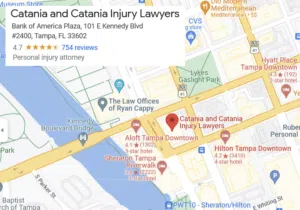
Most people have not heard the term “degloving injury.” But this serious injury often requires extensive treatment, including surgery. Even with treatment, these injuries can develop infections. Occasionally, a degloving injury can cause death.
Degloving injuries can cause long-term complications. Permanent disfigurement, scarring, and loss of sensation can follow a degloving injury.
Here is some information about degloving injuries and the compensation you can seek for their effects.
Table of Contents
How Does a Degloving Injury Happen?

You might have seen or even experienced a degloving injury without using that term to describe it. A degloving injury happens when a layer of skin and soft tissue separates from the soft tissue and bones beneath it.
Degloving injuries take two forms:
Open Degloving Injury
An open degloving injury happens when the separated layer of skin and soft tissue peels off the body, leaving an open wound. The flesh may form a flap that is still connected to the body. Alternatively, the flesh may tear from the body completely.
Common locations for open degloving injuries include the legs, face, and scalp.
Closed Degloving Injury
A closed degloving injury happens when a gap opens up between layers of flesh without peeling open. You can think of this type of degloving injury as a bubble between layers of soft tissue. This bubble may fill with blood, fat, or lymphatic fluid.
Common locations for closed degloving injuries include the hip and knee.
What Are the Side Effects of a Degloving Injury?
Degloving injuries can produce many problems. Doctors can address some of these problems when they treat the degloving injury. But doctors do not have the technology to solve every problem that can arise.
Some effects of a degloving injury include:
Blood Loss
When a layer of skin and soft tissue separates from the underlying tissue, blood vessels can rupture. In an open degloving injury, you might suffer severe bleeding from the place where the flesh peeled away.
In a closed degloving injury, the pocket can fill with blood. This creates a huge bruise that you may or may not see through the skin.
Shock
Shock happens when the blood pressure drops. The drop in blood pressure inhibits the body’s ability to pump blood to vital organs like the brain, heart, and lungs. A degloving injury can cause shock in a few ways.
Bleeding can cause a loss of blood volume. The lost blood allows the pressure in the remaining blood to drop.
Dehydration can also cause a drop in blood pressure. The body can lose fluid through an open degloving injury, leading to shock.
Infection
A degloving injury can become infected with bacteria and other pathogens. This often happens during an accident, where the object that tore the flesh might have bacteria on it.
It can also happen after an accident when the accident victim falls to the ground, getting bacteria from the dirt or pavement into the wound.
How Do Doctors Treat a Degloving Injury?
Doctors cannot treat all degloving injuries. Sometimes, the layer of separated flesh sustains too much damage for doctors to reattach it.
In this case, doctors may need to remove the dead flesh and close the wound. If they cannot close the wound, doctors may need to amputate.
If doctors can repair the injury, the treatment will depend on the type of degloving injury.
Treatment for Open Degloving Injury
An open degloving injury may require microsurgery to reconnect the blood vessels and nerves that were torn during the injury. If the surgeon cannot reconnect the major nerves, the injured area could lose sensation.
The repaired flesh could experience numbness and tingling. The patient might also lose the ability to sense hot and cold in the area.
Worse yet, the patient might lose the ability to control the injured body part. For example, if the face experiences a degloving in an auto accident, the injured area might lose sensation and the ability for facial expressions.
Surgeons must also reconnect the blood supply to the flap of tissue. If the flesh cannot get supplied with blood, the tissue will die.
Once the doctor restores the nerves and blood vessels, the doctor reattaches the muscle and closes the skin. If the skin does not cover the wound, the doctor might apply a skin graft.
Treatment for a Closed Degloving Injury
The biggest obstacle to treating a closed degloving injury is diagnosis. Closed degloving injuries lack obvious outward signs of the injury. As a result, a doctor might only find the closed degloving injury on an X-ray or MRI.
Once doctors diagnose the injury, they might just use compression to push the layers back together so they can heal. Occasionally, doctors will drain the fluid in the gap or even operate to remove dead tissue.
What Are the Risk Factors for a Degloving Injury?
Some types of accidents have an increased risk of a degloving injury, including:
Car Accidents
Cars involve many materials that can tear flesh from your body. A broken window or a jagged piece of metal can rip a layer of tissue from your body during a car accident.
Motorcycle Accidents
Motorcycle accidents often result in torn flesh. A vehicle could tear a layer off your body when it hits you. You could also lose a layer of flesh as you slide along the pavement after the accident.
Bicycle and Pedestrian Accidents
Pedestrian accidents and bicycle accidents can result in a degloving injury. Again, the initial impact of the vehicle or the secondary impact on the ground could tear a flap of tissue from your body.
Workplace Accidents
Tools and machinery could tear the flesh from your body in a workplace accident.
Falls
Falls can sometimes cause a closed degloving injury. This happens when you hit the ground at the right angle to shear a layer of flesh without tearing the skin.
What Compensation Can I Recover for a Degloving Injury?
Injury compensation covers your medical expenses and lost income. With a degloving injury, you might have substantial medical expenses. An open degloving injury could require several surgeries.
Injury compensation can also include your pain and suffering. Degloving injuries can cause you considerable pain. You might also experience mental anguish, depression, and anxiety. Your damages can include compensation for these losses.
Contact a Tampa Personal Injury Lawyer for Help
You shouldn’t have to face the consequences for a degloving injury all on your own. To learn about the compensation you can seek for your degloving injury, contact Catania and Catania Injury Lawyers at (813) 222-8656 for a free consultation.
When you reach out to our team, you’ll have the chance to discuss the circumstances of your injury and receive expert legal advice on your next best steps. Set up a no-obligation appointment today.




